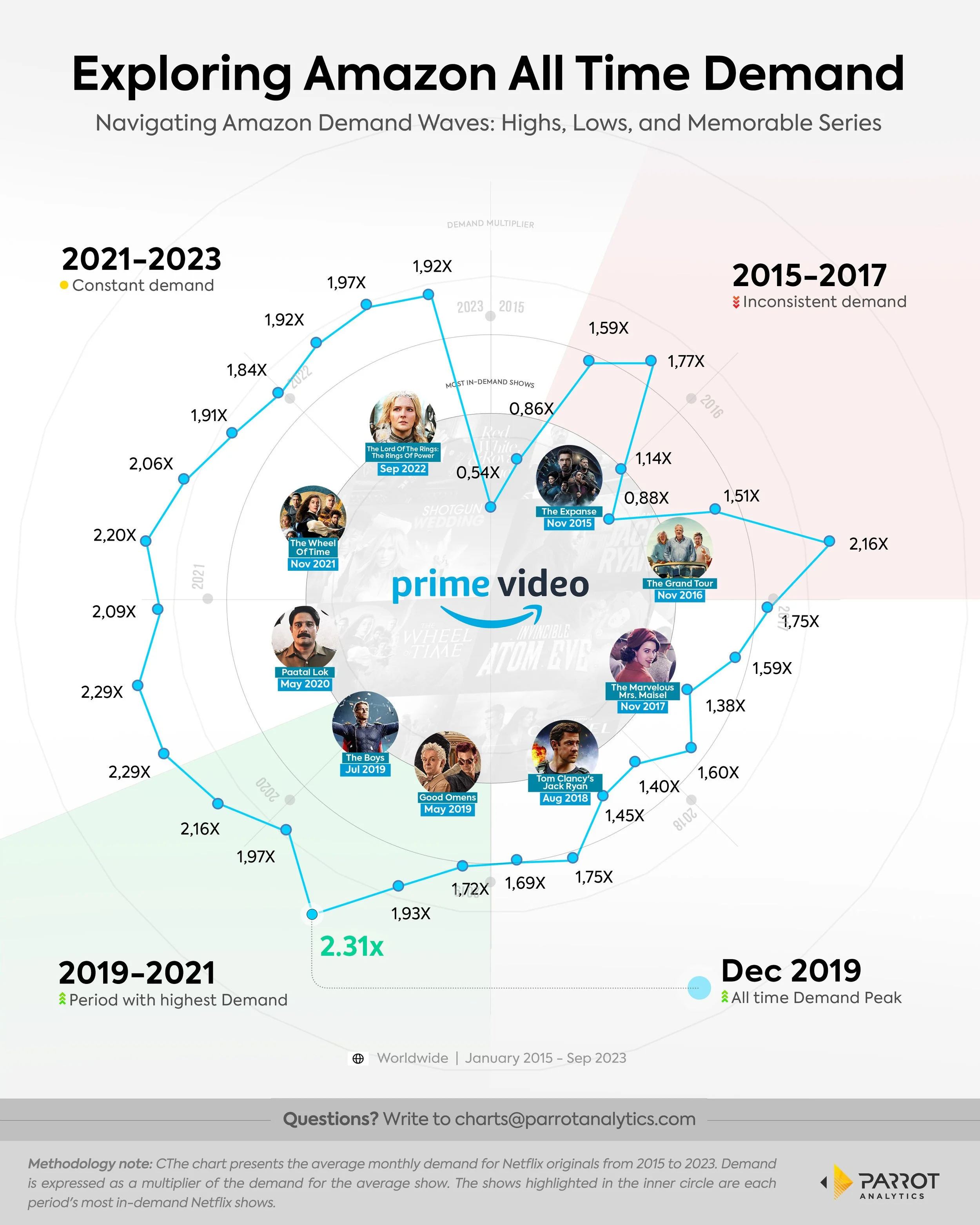Amazon Prime's Pivot: From Art House Hits to Mainstream Magnets
As Amazon Prime Video continues to roll out what is expected to be a successful transition to ad-supported viewing, now is a great time to examine how well the streaming service has maintained audience demand with its originals. Even as library content remains a key contributor to all streamers, especially Amazon, the ability to promote new products within the title cards of fresh and buzzy new originals (I’m enjoying Mr. and Mrs. Smith so far) will go a long way to increasing the company’s CPM. In more straightforward terms: the more popular the content, the more money Amazon can charge advertisers.
In the early years of Amazon’s original content endeavors, audience demand was unsurprisingly inconsistent, according to Parrot Analytics data. From 2015-2017, the service was still figuring out what kind of content platform it wanted to be while working hard to earn legitimacy in the eyes of traditional Hollywood creators. Since then, Amazon’s strategy has come more into focus with three distinct programming lanes.
The service has become a go-to home for serialized procedurals that share narrative DNA with broadcast dramas, but in slightly more explosive fashion. Bosch, Goliath, Jack Ryan, The Terminal List and Reacher are all successful entries in Dad TV programming.
Modern prestige fare such as The Marvelous Mrs. Maisel and Good Omens were certainly not obvious green lights on paper, but both became critically acclaimed fan favorites with commercial appeal. They are strong reminders that shows that compete for awards don’t need to always be criminally under-watched by everyone who isn’t a TV critic.
As the most global streamer this side of Netflix, Amazon has also made a concentrated effort to invest in broad appeal genre programming that can serve as blockbuster appointment viewing. This includes flagship series The Boys, and fantasy shows such as The Wheel of Time and The Lord of the Rings: The Rings of Power. Not every high priced home run swing connects, but from 2019-2021, Amazon Prime Video enjoyed its highest average original demand stretch.
Amid the return to normalcy from the pandemic, mounting competition and an industry-wide contraction, Amazon has seen its average original title demand decrease roughly 17% from late 2021 to late 2023, similar to Netflix and Disney+. All in all, Amazon has built a solid foundation, but is perhaps not as consistent with delivering breakout TV originals as advertisers might initially hope.


